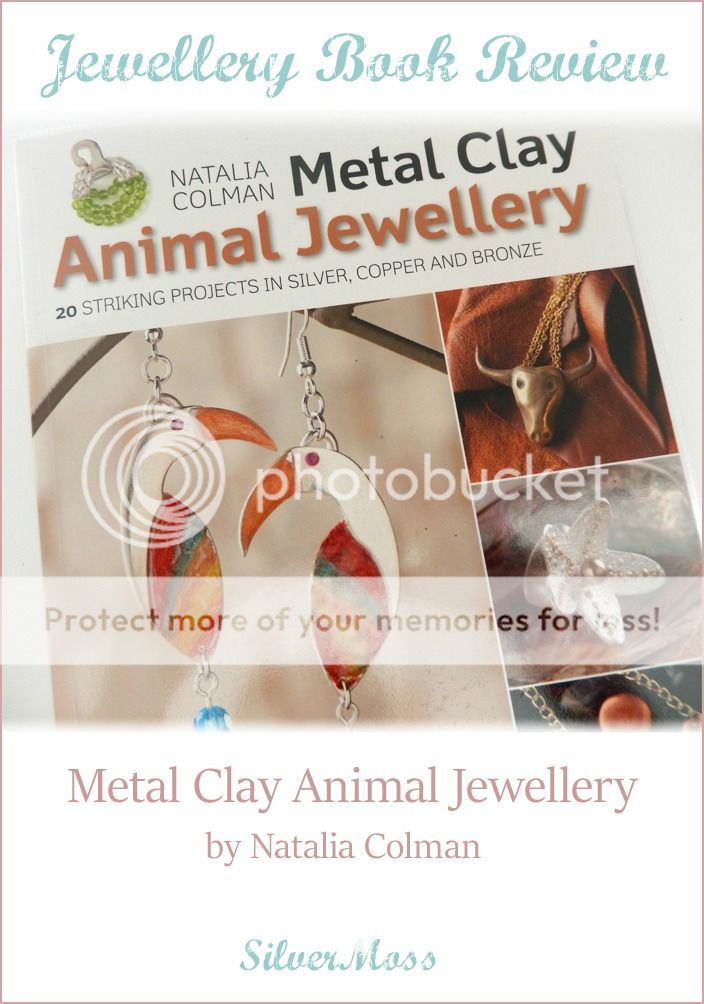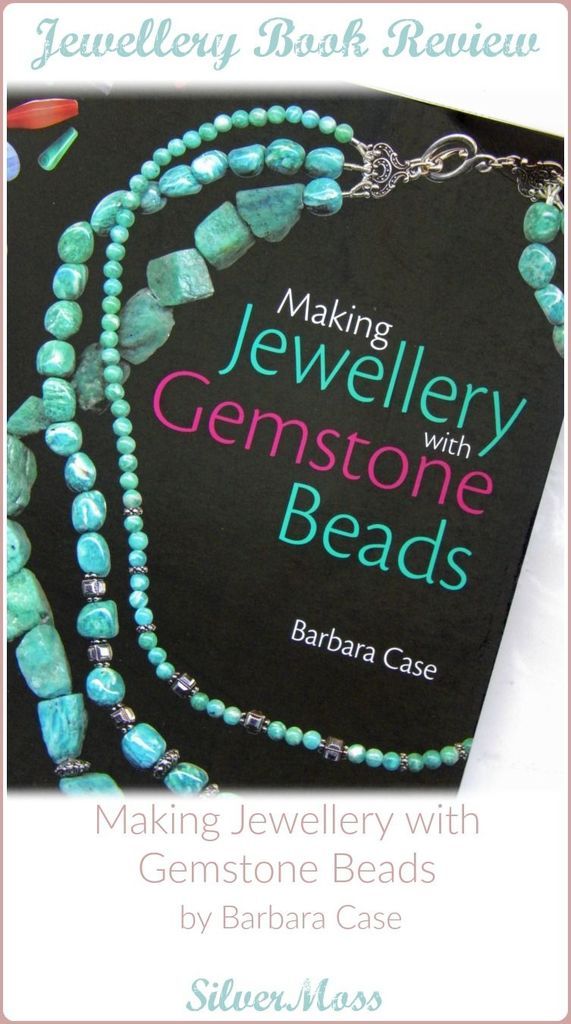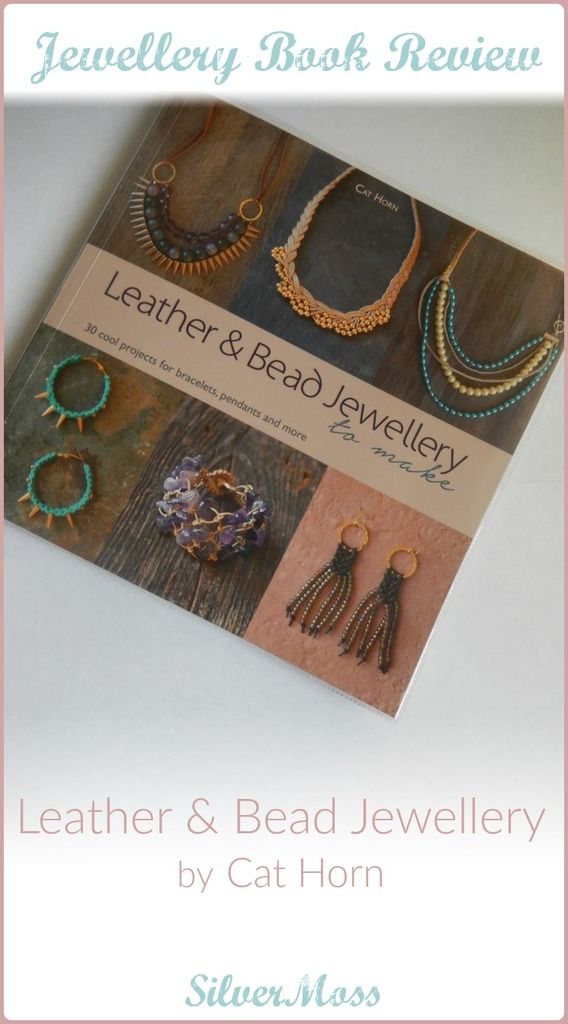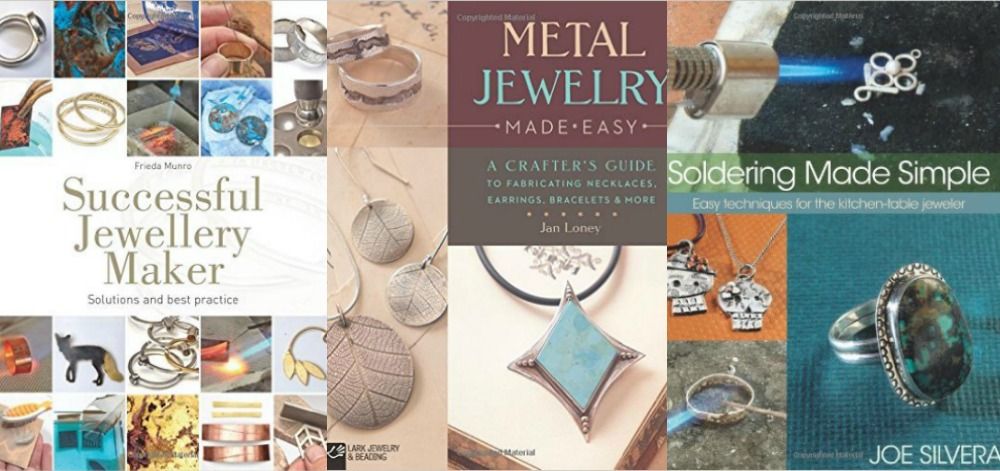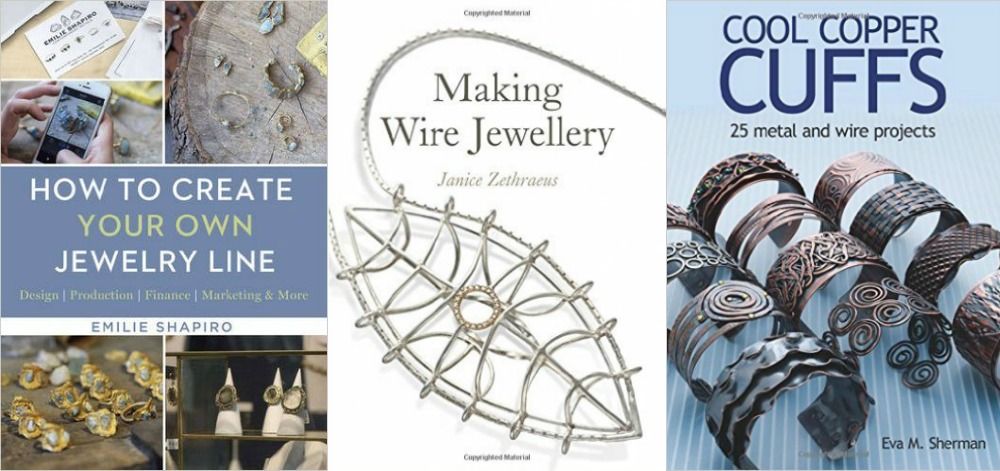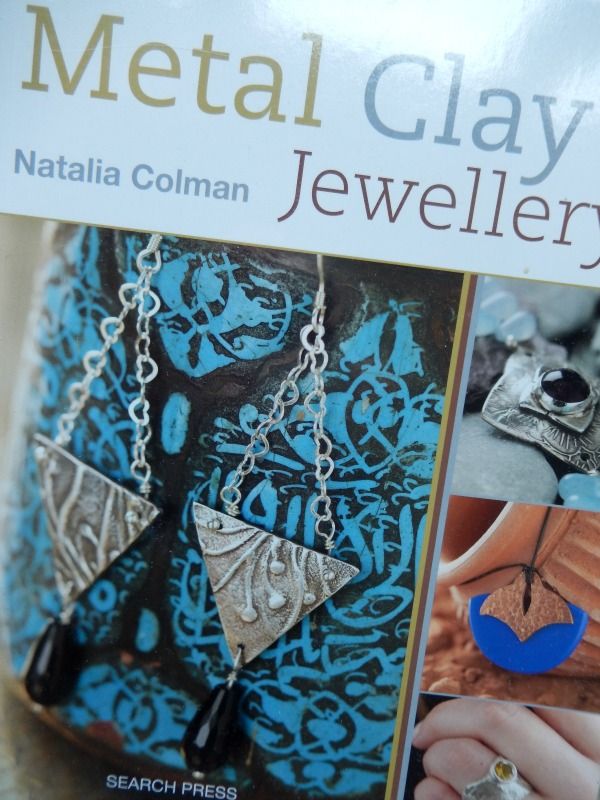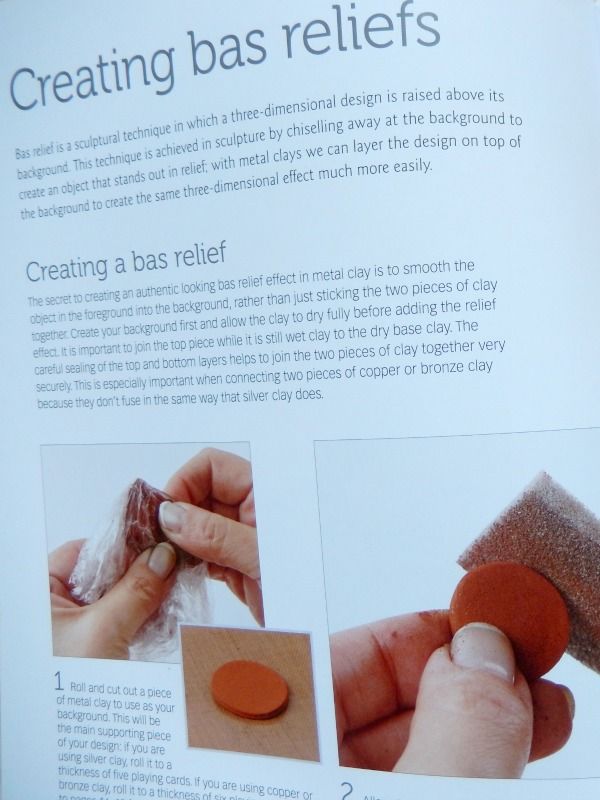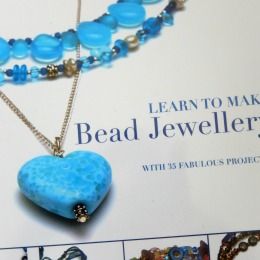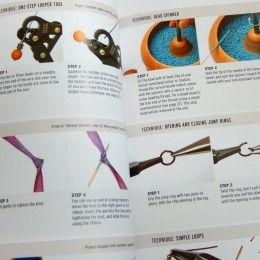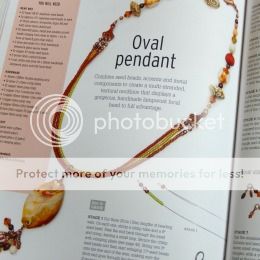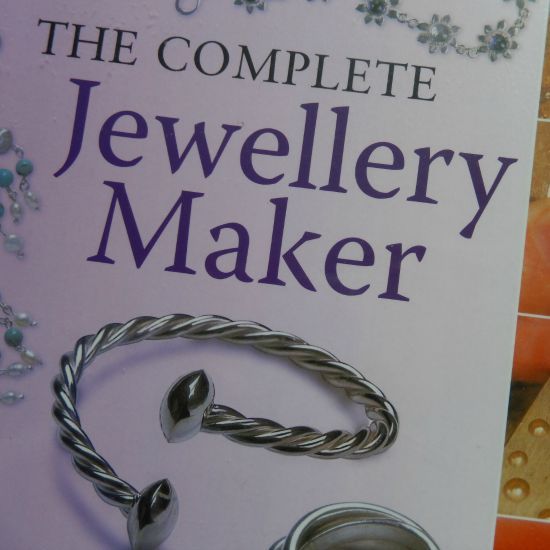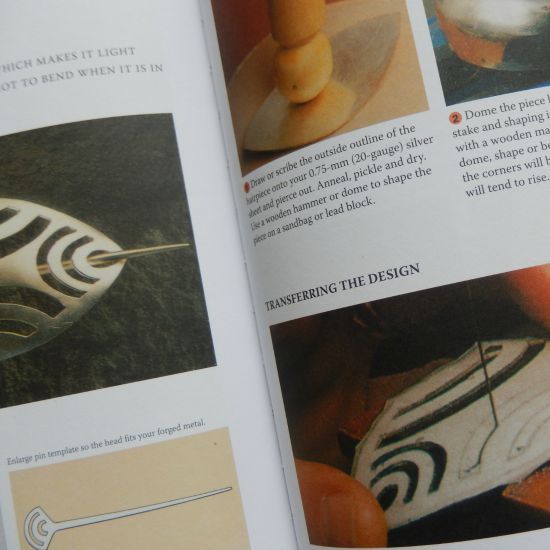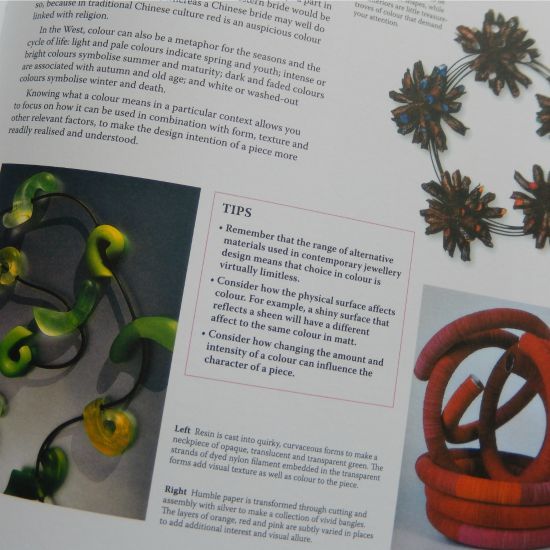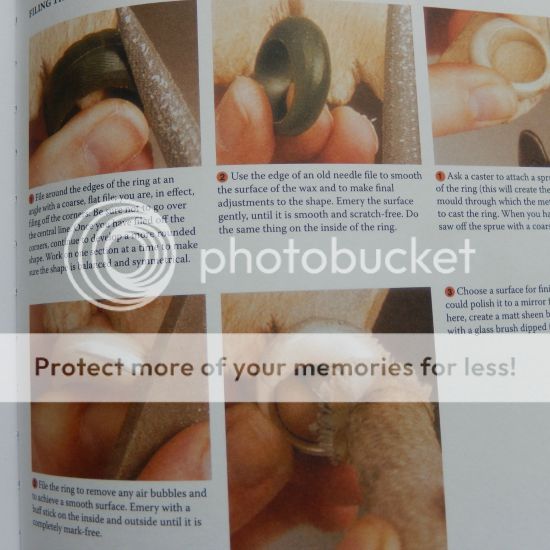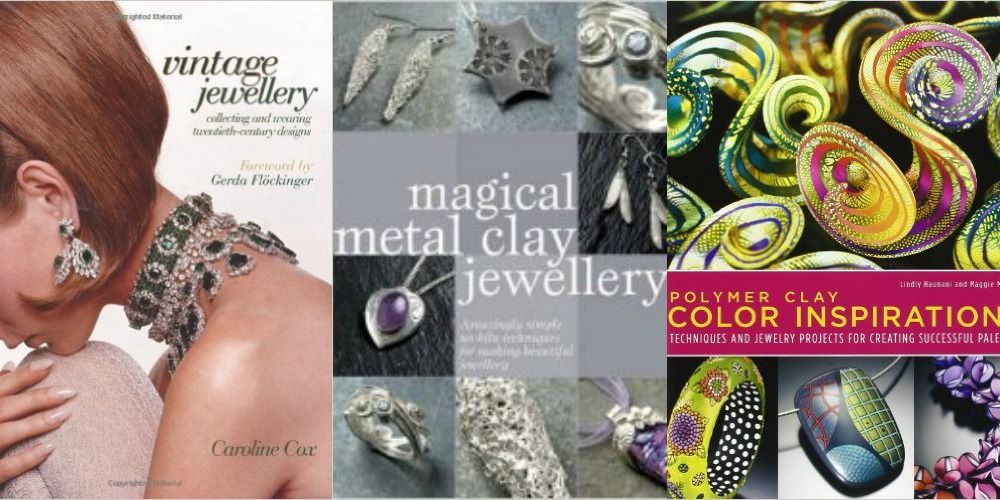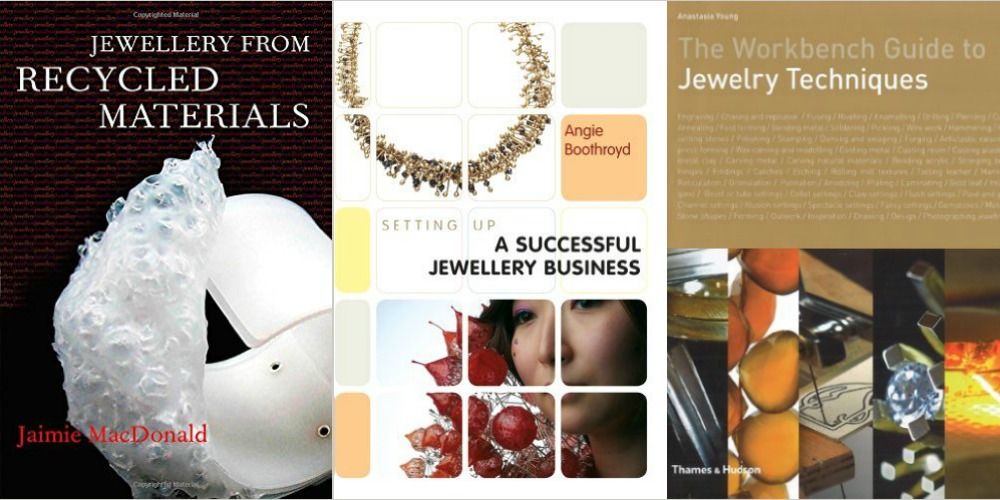It's December, it's nearly Christmas, and, so far, I've not asked for any new jewellery books this year... having said that, just because I've not actually said I want a copy of one of those potential gems, doesn't mean I wouldn't mind finding one in my stocking/pillowcase come Christmas day morning...
As in last year's post, the books are in no special order (of any kind)...



Mixed Metals by Danielle Fox
It may be obvious but I love working with silver, and I've dabbled a little with gold and copper over the years. Integrating different metals together fascinates me and a book that covers those metals and more, and how to use them together, looks to be an interesting read.
Metal Clay for Jewelry Makers by Sue Heaser
I was very impressed with the book by Sue Heaser I received for Christmas last year and this is a way of working with silver that I still haven't explored anywhere near fully enough.
Weave, Wrap, Coil: Creating Artisan Wire Jewelry by Jodi Bombardier
Wire wrapping is a skill I'm increasingly eager to learn more about and this book looks to be a great guide to starting, and progressing, in this kind of jewellery making.



Metalsmithing Made Easy by Kate Ferrant Richbourg
Many jewellery making books deal more with the 'softer' side of the art, involving threads and beads. This one, however, seems focused not just on metals, but how to connect them, covering both soldering and cold connections, topics you can never know enough about if you work with silver.
Christie's: The Jewellery Archives Revealed by Vincent Meylan
This book isn't about making jewellery, but it is about appreciating the skill and work and inspiration that has gone into some of the most beautiful pieces and collections that have passed through one of the most famous auction houses in the world. No doubt also an ideal way to convince yourself that you're not good enough to even pick up a piercing saw ever again...
The Art of Polymer Clay Millefiori Techniques by Donna Kato
Every year I spend a little time working with polymer clay and every year I vow I'll do more, which is no doubt why I'm always attracted back to books on this subject. Plus, I know the author of this one is so good that she even has her own brand of clay...
~~~
If you've read any of these books then do let me know what you think about them, and if they're worth adding to my already heaving jewellery book shelves? And do let me know of any recommendations you have for books I many have missed. I'd love to add to my wishlist!
PS. To see my jewellery book wishlists from Christmases past, then do take a look at my posts from 2016, 2013 and 2012.
(this post includes affiliate links - please check details here for more info.)
As in last year's post, the books are in no special order (of any kind)...



Mixed Metals by Danielle Fox
It may be obvious but I love working with silver, and I've dabbled a little with gold and copper over the years. Integrating different metals together fascinates me and a book that covers those metals and more, and how to use them together, looks to be an interesting read.
Metal Clay for Jewelry Makers by Sue Heaser
I was very impressed with the book by Sue Heaser I received for Christmas last year and this is a way of working with silver that I still haven't explored anywhere near fully enough.
Weave, Wrap, Coil: Creating Artisan Wire Jewelry by Jodi Bombardier
Wire wrapping is a skill I'm increasingly eager to learn more about and this book looks to be a great guide to starting, and progressing, in this kind of jewellery making.



Metalsmithing Made Easy by Kate Ferrant Richbourg
Many jewellery making books deal more with the 'softer' side of the art, involving threads and beads. This one, however, seems focused not just on metals, but how to connect them, covering both soldering and cold connections, topics you can never know enough about if you work with silver.
Christie's: The Jewellery Archives Revealed by Vincent Meylan
This book isn't about making jewellery, but it is about appreciating the skill and work and inspiration that has gone into some of the most beautiful pieces and collections that have passed through one of the most famous auction houses in the world. No doubt also an ideal way to convince yourself that you're not good enough to even pick up a piercing saw ever again...
The Art of Polymer Clay Millefiori Techniques by Donna Kato
Every year I spend a little time working with polymer clay and every year I vow I'll do more, which is no doubt why I'm always attracted back to books on this subject. Plus, I know the author of this one is so good that she even has her own brand of clay...
~~~
If you've read any of these books then do let me know what you think about them, and if they're worth adding to my already heaving jewellery book shelves? And do let me know of any recommendations you have for books I many have missed. I'd love to add to my wishlist!
PS. To see my jewellery book wishlists from Christmases past, then do take a look at my posts from 2016, 2013 and 2012.
(this post includes affiliate links - please check details here for more info.)






